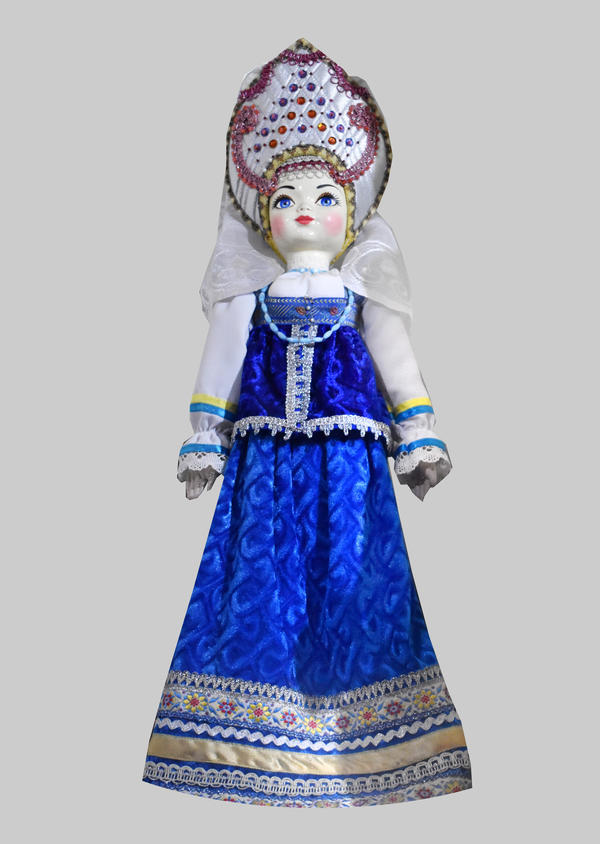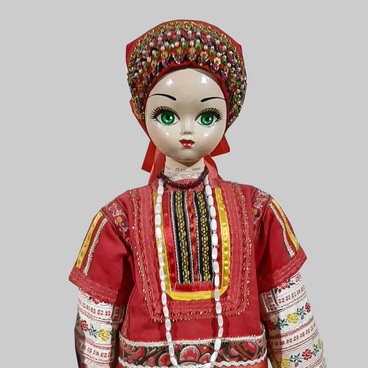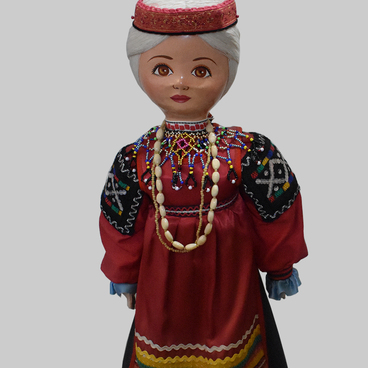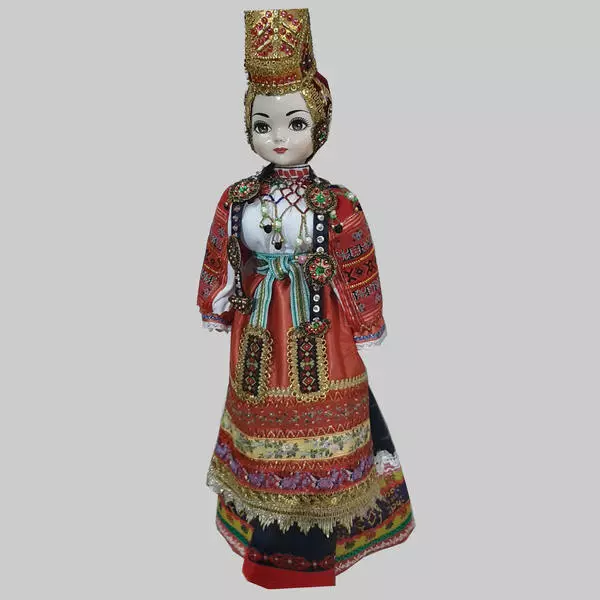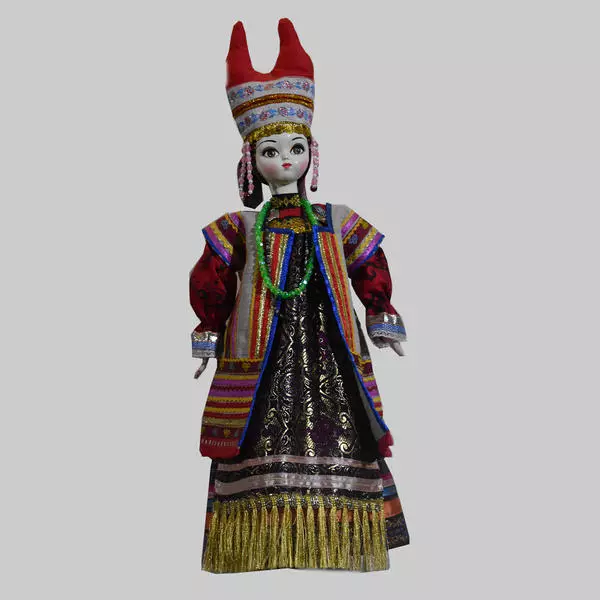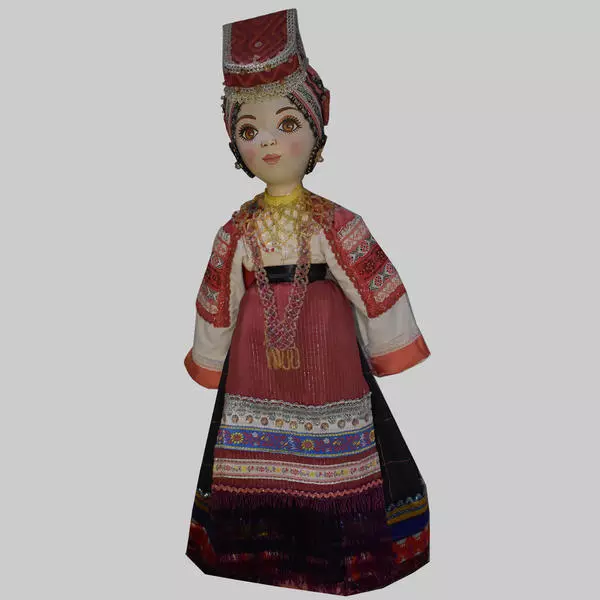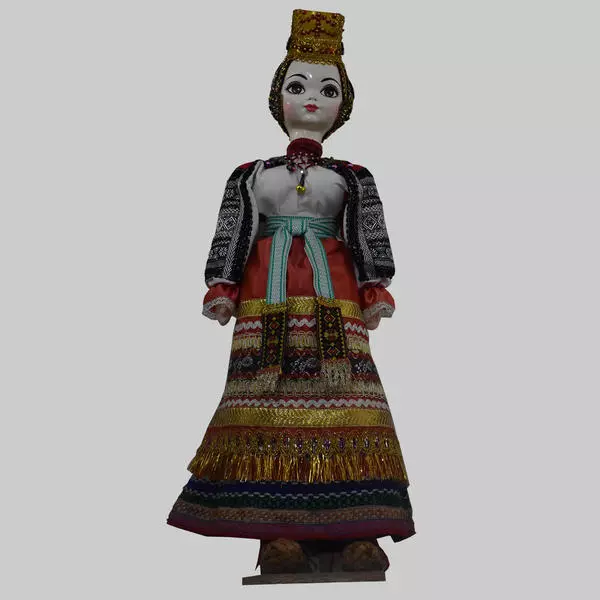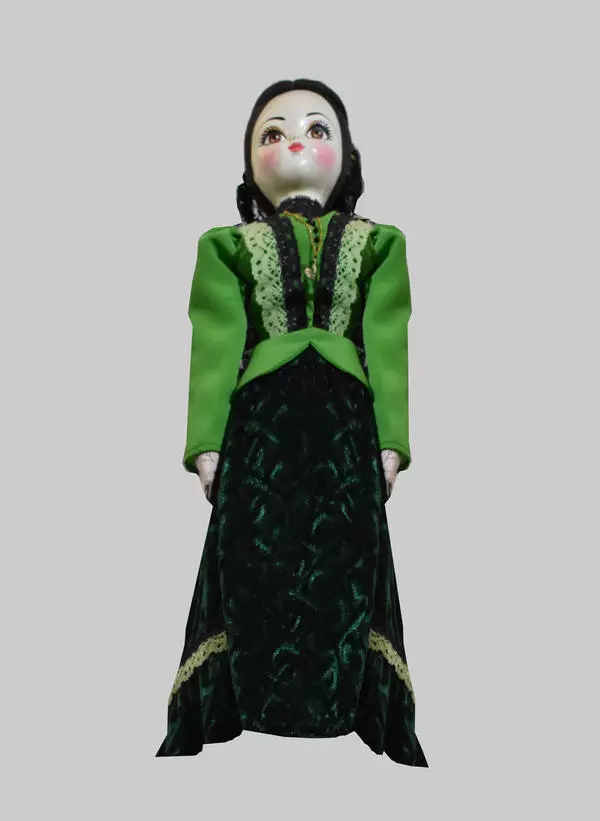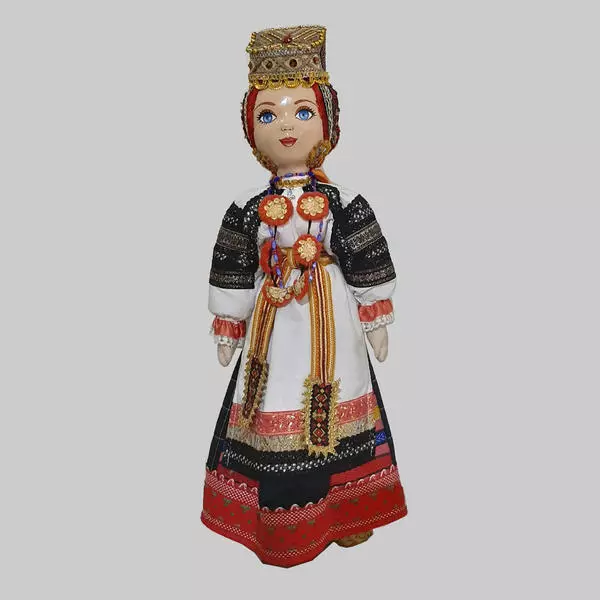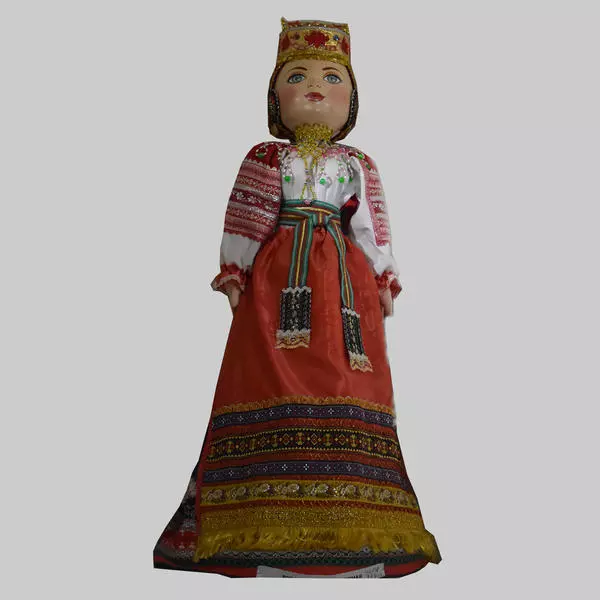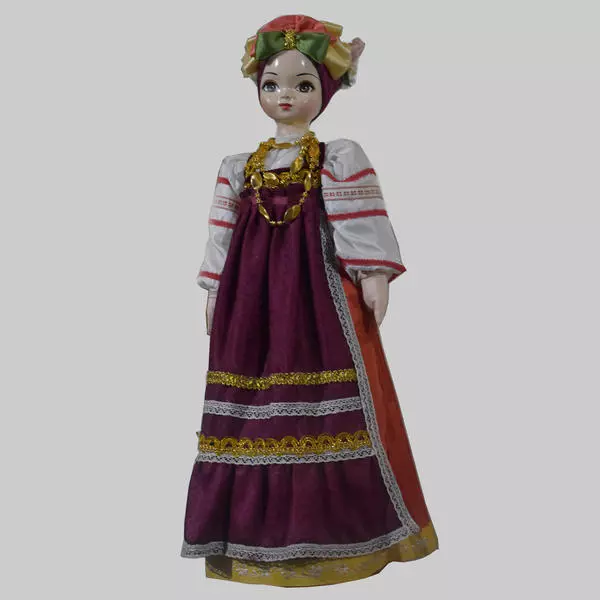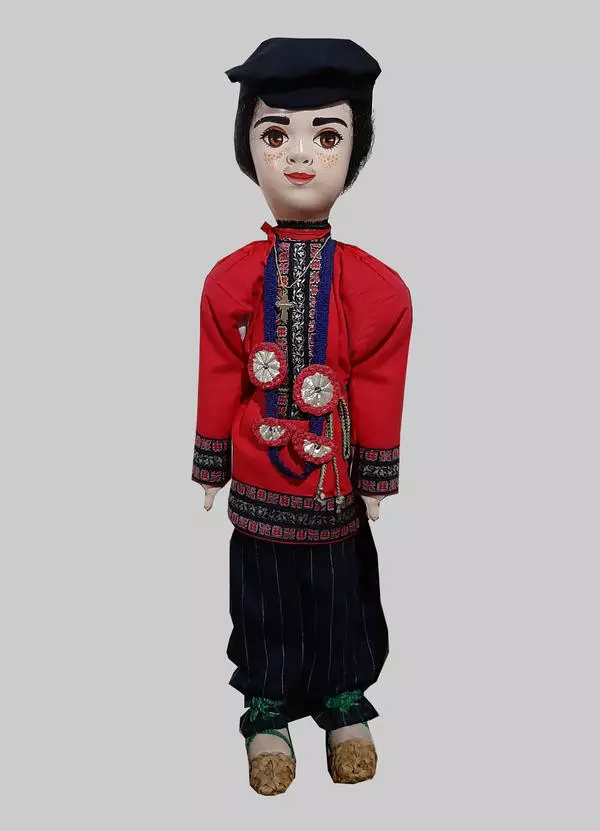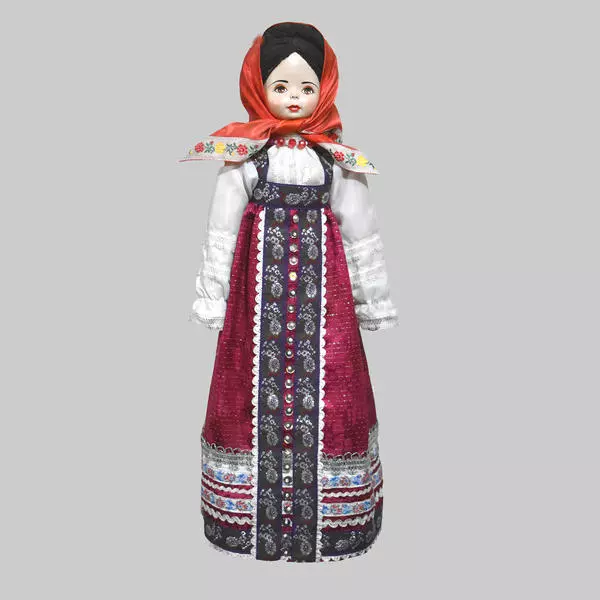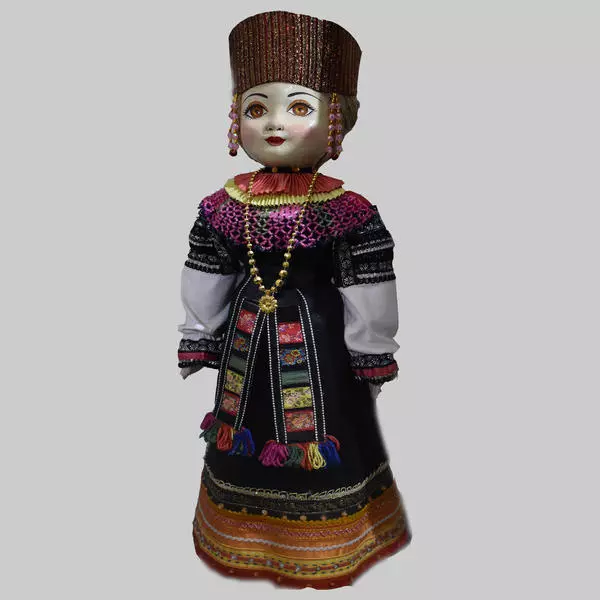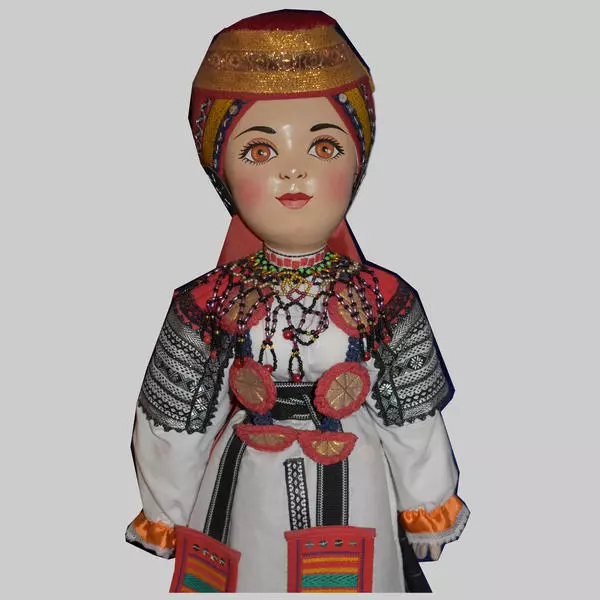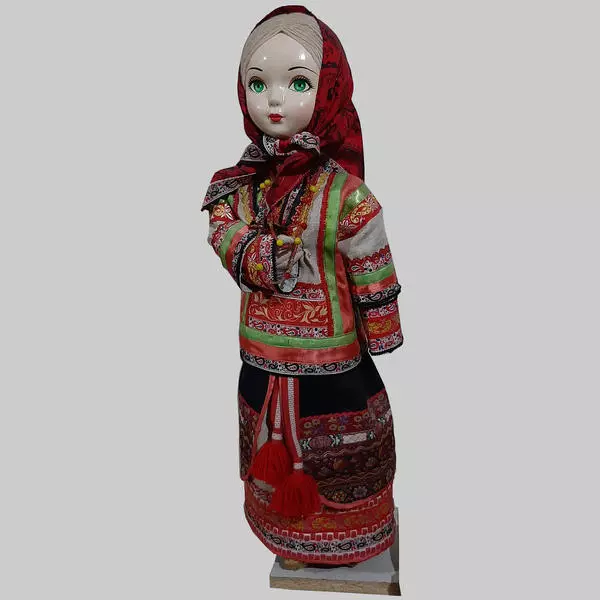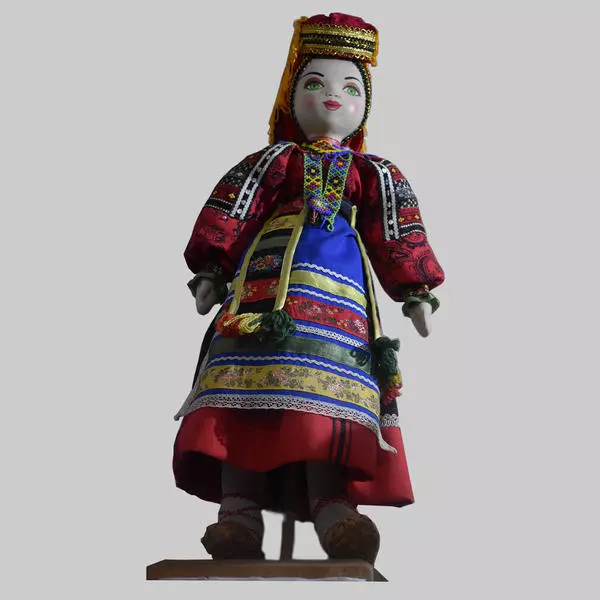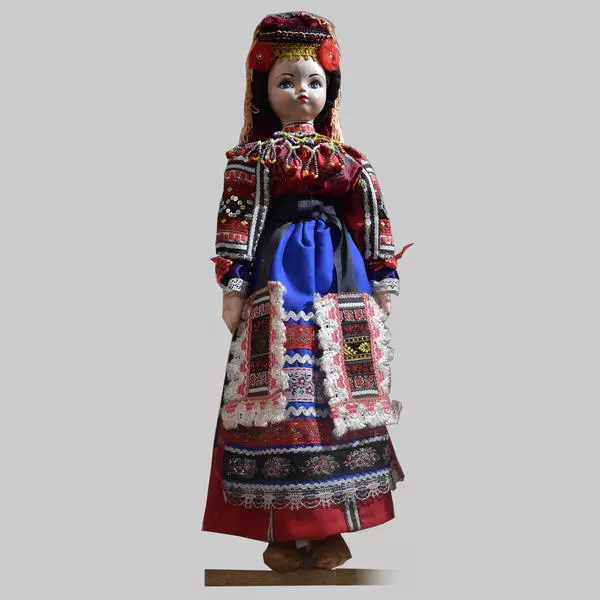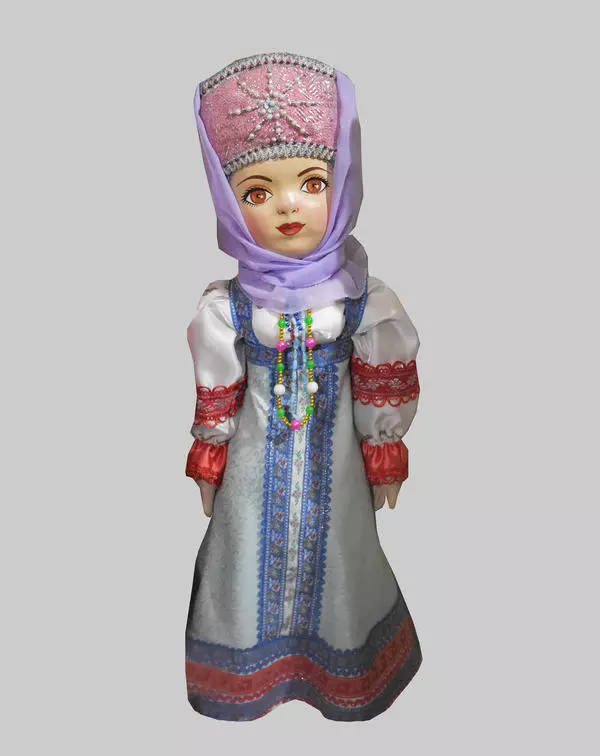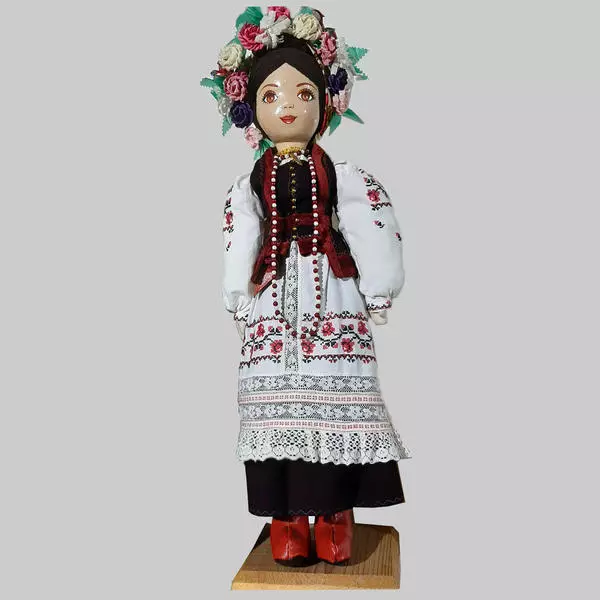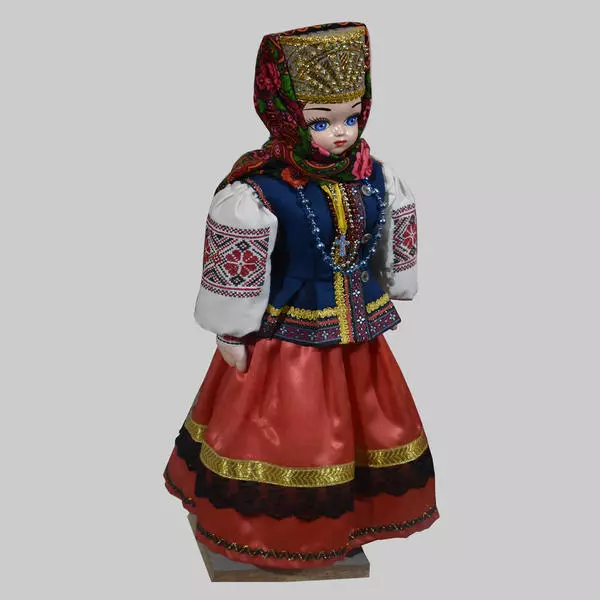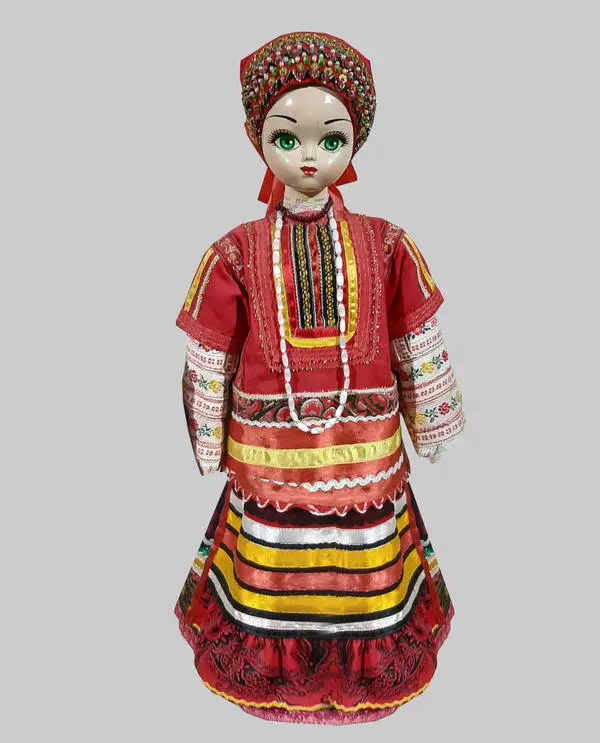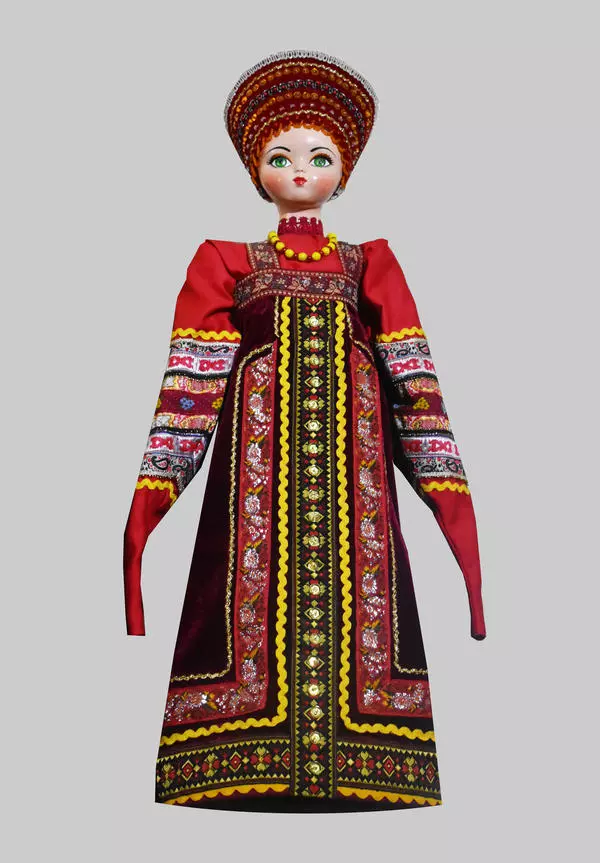A doll in Valdai wedding costume stands out from other exhibits for the richness and luxury of its gown. In every girl’s life wedding is a special day, and regardless of the locality, social status and family wealth, a special gown was selected to celebrate it even at those times. Wedding dresses in the northern and southern regions of the country differed in details, but they were united by one thing — the abundance of jewelry even on the least expensive sarafans (sundresses).
A sarafan and a shirt formed the basis of a female wedding dress. A shirt was most often sewn of natural linen, its sleeves were richly embroidered with multi-coloured threads. Each embroidery element had its own meaning, for example, a star meant grace from heavenly forces, and the “tree of life” symbol emphasized the importance of starting new life, creating a new family. The front and back of a shirt were covered with a sundress and might not have been embroidered.
A sundress was made of a thicker heavier fabric. In a wealthy family, it could be velvet or brocade, and in a poor family, it could be linen or wool. Its free cut did not emphasize the figure of the bride. The clothes were decorated with embroidery, beads, lacing, pearls, fur. In cold weather, they put on a ''dushegreya'' (a female sleeveless jacket usually padded or fur-lined).
Petticoats were worn under sundresses to give them additional volume. In this piece of clothing, a bride could go to bed on her first wedding night. The wedding petticoat was not allowed to be longer than the sundress by more than 15 cm.
A belt was not a mandatory component of the wedding dress, but if it was used, it was not to emphasize the waist, but simply to maintain the outfit. Sometimes there were several belts. Of course, each of them was richly embroidered.
An apron could be one more detail. Sometimes it was short with ties behind the back, or it was long and worn over the neck. The apron was not as richly decorated as the sundress. Its main goal was to demonstrate the future housewife in the best possible way.
Other accessories, beads, earrings, bracelets, were rarely used in a wedding dress. They were simply unnecessary because of the richness and beauty of other elements!
Girls wore bast shoes, leather sandals, and ''valenki'' (felt boots) in winter. On the head, depending on the region, they wore a kokoshnik, a ''soroka'' (literally a magpie, a small local hat), and a ''kosnik'' (a bandage with pendants).
A sarafan and a shirt formed the basis of a female wedding dress. A shirt was most often sewn of natural linen, its sleeves were richly embroidered with multi-coloured threads. Each embroidery element had its own meaning, for example, a star meant grace from heavenly forces, and the “tree of life” symbol emphasized the importance of starting new life, creating a new family. The front and back of a shirt were covered with a sundress and might not have been embroidered.
A sundress was made of a thicker heavier fabric. In a wealthy family, it could be velvet or brocade, and in a poor family, it could be linen or wool. Its free cut did not emphasize the figure of the bride. The clothes were decorated with embroidery, beads, lacing, pearls, fur. In cold weather, they put on a ''dushegreya'' (a female sleeveless jacket usually padded or fur-lined).
Petticoats were worn under sundresses to give them additional volume. In this piece of clothing, a bride could go to bed on her first wedding night. The wedding petticoat was not allowed to be longer than the sundress by more than 15 cm.
A belt was not a mandatory component of the wedding dress, but if it was used, it was not to emphasize the waist, but simply to maintain the outfit. Sometimes there were several belts. Of course, each of them was richly embroidered.
An apron could be one more detail. Sometimes it was short with ties behind the back, or it was long and worn over the neck. The apron was not as richly decorated as the sundress. Its main goal was to demonstrate the future housewife in the best possible way.
Other accessories, beads, earrings, bracelets, were rarely used in a wedding dress. They were simply unnecessary because of the richness and beauty of other elements!
Girls wore bast shoes, leather sandals, and ''valenki'' (felt boots) in winter. On the head, depending on the region, they wore a kokoshnik, a ''soroka'' (literally a magpie, a small local hat), and a ''kosnik'' (a bandage with pendants).

